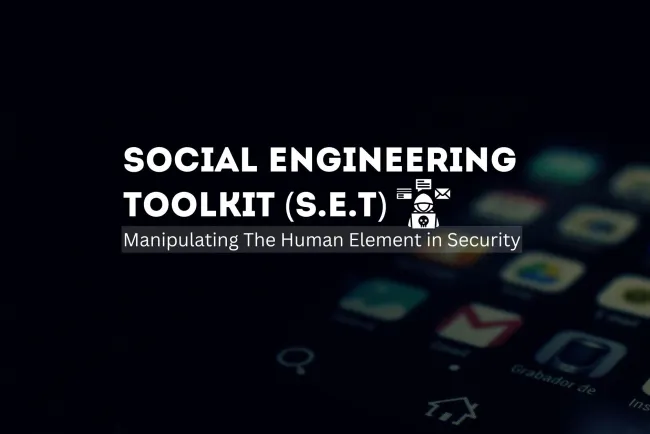AI-Powered Phishing Attacks in 2025 | How AI is Revolutionizing Cybersecurity Threats
AI-powered phishing attacks have grown significantly in sophistication by 2025, leveraging advanced algorithms to generate highly convincing fraudulent emails. These AI-driven campaigns have shown higher success rates than traditional phishing attacks, making them a major cybersecurity threat. This blog explores the growing risk of AI-generated phishing scams, how they work, and steps individuals and organizations can take to protect themselves.

Table of Contents
- AI-Powered Phishing Attacks: The Rising Threat in 2025
- What Are AI-Powered Phishing Attacks?
- Why Are AI-Driven Phishing Attacks More Effective?
- Real-World Example: Human-Written vs AI-Generated Phishing Emails
- How Do Hackers Use AI in Phishing?
- Who Is Most at Risk from AI Phishing in 2025?
- What Industries Are Facing the Greatest Threat?
- How to Identify AI-Powered Phishing Emails?
- What Can Organizations Do to Protect Themselves?
- How Can Individuals Stay Safe?
- What’s the Future of Phishing Attacks with AI?
- Conclusion
- Frequently Asked Questions (FAQs)
AI-Powered Phishing Attacks: The Rising Threat in 2025
As cybersecurity threats continue to evolve, one of the most alarming trends in 2025 is the emergence of AI-powered phishing attacks. These attacks are not only more convincing but also more successful than traditional methods. Leveraging artificial intelligence, attackers can now automate and personalize phishing attempts at an unprecedented scale, leading to increased success rates and greater damage.
What Are AI-Powered Phishing Attacks?
AI-powered phishing uses artificial intelligence to mimic legitimate emails or messages with high accuracy. These attacks are designed to deceive users into sharing sensitive information, clicking malicious links, or downloading harmful attachments.
Key Features:
-
Machine learning algorithms generate human-like text.
-
Emails are personalized based on public data.
-
Natural Language Processing (NLP) ensures grammatically correct and context-aware communication.
Why Are AI-Driven Phishing Attacks More Effective?
AI-generated phishing emails are often indistinguishable from genuine messages, making them more likely to deceive recipients. These emails can imitate tone, structure, and even branding elements of known organizations.
Benefits for Cybercriminals:
-
Higher click-through rates (up to 50% more than human-written emails).
-
Scalability through automation.
-
Continuous learning to adapt and improve.
Real-World Example: Human-Written vs AI-Generated Phishing Emails
| Feature | Human-Written Phishing Email | AI-Generated Phishing Email |
|---|---|---|
| Grammar & Tone | Often flawed or generic | Polished and contextual |
| Personalization | Limited | Highly personalized |
| Click-through Success Rate | ~12% | ~30–50% |
| Adaptability | Static content | Learns from user responses |
| Volume | Limited | Mass-scale automation |
How Do Hackers Use AI in Phishing?
1. Data Mining for Personalization
Hackers scrape data from:
-
Social media platforms
-
Company websites
-
Public databases
AI uses this data to craft custom-tailored phishing messages that increase trust and reduce suspicion.
2. Automated Email Creation
AI tools like GPT and LLMs generate:
-
Persuasive subject lines
-
Convincing call-to-actions
-
Authentic brand signatures
3. Behavioral Mimicry
AI mimics internal email structures or managerial language to trick employees within an organization.
Who Is Most at Risk from AI Phishing in 2025?
Targeted Users Include:
-
Remote employees accessing corporate data.
-
Finance departments managing invoices or wire transfers.
-
High-level executives (CEO fraud or whaling attacks).
-
Students and young professionals with limited security training.
What Industries Are Facing the Greatest Threat?
| Industry | Risk Level | Common Targets |
|---|---|---|
| Banking & Finance | Very High | Account logins, wire transfers |
| Healthcare | High | Patient data, insurance credentials |
| Education | High | Student records, email systems |
| E-commerce | Medium | Payment info, fake order confirmations |
| Government | High | ID fraud, classified communications |
How to Identify AI-Powered Phishing Emails?
Common Red Flags:
-
Unusual sender addresses
-
Too-good-to-be-true offers
-
Slight spelling or domain name errors
-
Urgent tone demanding immediate action
-
Hyper-personalized messages that seem oddly accurate
What Can Organizations Do to Protect Themselves?
Security Measures for Businesses:
-
Implement AI-Based Email Filters
-
Use machine learning-based detection systems that identify and block AI-generated phishing content.
-
-
Employee Security Awareness Training
-
Conduct regular phishing simulations and workshops.
-
-
Multi-Factor Authentication (MFA)
-
Protect accounts even if passwords are compromised.
-
-
Regular Audits and Penetration Testing
-
Simulate attacks to find vulnerabilities.
-
-
Zero Trust Architecture
-
Restrict data access to only what’s needed per user role.
-
How Can Individuals Stay Safe?
Tips for Everyday Users:
-
Don’t click suspicious links in emails or messages.
-
Hover over links to inspect URLs before clicking.
-
Verify sender identities independently (e.g., call the person).
-
Use strong, unique passwords and a password manager.
-
Enable MFA for all critical accounts.
What’s the Future of Phishing Attacks with AI?
In 2025 and beyond, AI will continue to evolve, making phishing attacks more complex and targeted. Deepfake audio and video phishing are already emerging threats. As AI voice cloning improves, phone-based scams will also rise, making digital literacy and defensive AI tools critical for cybersecurity.
Conclusion
AI-powered phishing attacks are no longer theoretical—they are a daily reality in 2025. Organizations and individuals alike must adapt cybersecurity strategies to combat this new breed of intelligent threats. By combining advanced security technologies, education, and policy enforcement, it is possible to mitigate the risk and stay ahead of cybercriminals.
FAQs
What are AI-powered phishing attacks?
AI-powered phishing attacks use artificial intelligence to generate sophisticated and convincing fraudulent emails. These emails often mimic legitimate correspondence, making them harder for individuals to identify as phishing attempts.
How are AI-generated phishing emails different from human-written ones?
AI-generated phishing emails are typically more polished, personalized, and contextually accurate, leading to higher success rates compared to human-written phishing attempts that may contain grammatical errors or awkward phrasing.
Why are AI-powered phishing attacks more dangerous?
AI-powered phishing attacks are more dangerous because they can scale quickly, are highly personalized, and often contain no obvious signs of fraud, making them much harder for individuals to detect.
What technologies enable AI phishing attacks?
Technologies such as Natural Language Processing (NLP) and machine learning algorithms are used to craft personalized, realistic phishing emails that replicate the tone, structure, and style of legitimate communications.
How do AI phishing attacks use personal data?
AI phishing attacks can analyze publicly available data from social media and data breaches to craft emails that appear to come from trusted sources, increasing the likelihood of success.
What are the consequences of falling victim to an AI phishing attack?
Victims of AI phishing attacks may experience financial loss, data breaches, identity theft, or even ransomware infections, which can compromise both personal and organizational security.
How can I detect AI-powered phishing emails?
AI-powered phishing emails often lack overt signs of fraud. To detect them, be cautious of unexpected requests for sensitive information, especially those that seem urgent or are from unfamiliar sources.
What is the impact of AI phishing on businesses?
For businesses, AI phishing can lead to stolen customer data, financial loss, reputational damage, and potential legal consequences. It also opens the door for further cyberattacks like ransomware or data breaches.
Can AI tools help protect against phishing attacks?
Yes, AI-driven security tools can analyze email content, detect abnormal sender behavior, and flag suspicious messages, helping to protect against AI-powered phishing attempts.
What role does machine learning play in phishing attacks?
Machine learning allows cybercriminals to adapt and improve their phishing strategies by analyzing previous attack outcomes and adjusting future emails to be more effective.
How can I protect myself from AI-powered phishing attacks?
Enable multi-factor authentication (MFA), use AI-driven security tools, train employees on phishing awareness, keep software updated, and run regular phishing simulations to minimize risk.
Are AI phishing attacks more common in 2025?
Yes, as AI technologies become more sophisticated, phishing attacks are becoming more frequent and dangerous, with attackers leveraging AI to scale attacks and increase their success rates.
What is the role of AI in phishing attack automation?
AI enables the automation of phishing campaigns at a massive scale, allowing attackers to send personalized, convincing emails to a wide range of individuals quickly.
How do phishing simulations help prevent AI-powered attacks?
Phishing simulations train individuals to recognize phishing attempts in a controlled environment, improving their ability to spot AI-powered attacks in real-world situations.
What are the best practices for phishing prevention?
Best practices include using multi-factor authentication (MFA), educating employees, implementing AI-driven security systems, and conducting regular phishing simulations and security audits.
What data can be stolen through phishing attacks?
Phishing attacks aim to steal personal information, login credentials, financial details, and corporate data, which can then be used for fraud or identity theft.
How can organizations safeguard against AI phishing attacks?
Organizations can safeguard against AI phishing by using advanced email filtering solutions, adopting AI-driven threat detection systems, and educating employees about the latest phishing tactics.
What are the key differences between AI phishing and traditional phishing?
AI phishing attacks are more sophisticated, personalized, and harder to detect compared to traditional phishing, which typically contains noticeable errors and generalized messages.
Is AI phishing a growing problem in cybersecurity?
Yes, with the rapid advancement of AI, phishing has become a major cybersecurity concern, as attackers can use AI to craft more convincing, large-scale phishing campaigns.
What should businesses do after a phishing attack?
After a phishing attack, businesses should immediately secure affected systems, notify stakeholders, and investigate the breach. They should also provide employee training and reinforce cybersecurity measures.
Can AI help prevent phishing attacks?
AI can help prevent phishing attacks by automatically detecting malicious content, analyzing patterns in emails, and providing alerts to potential threats before they can harm individuals or organizations.
What industries are most targeted by AI phishing attacks?
Industries dealing with sensitive financial, healthcare, or personal data, such as banking, healthcare, and government sectors, are often targeted by AI phishing attacks due to the value of the information they hold.













![Top 10 Ethical Hackers in the World [2025]](https://www.webasha.com/blog/uploads/images/202408/image_100x75_66c2f983c207b.webp)









